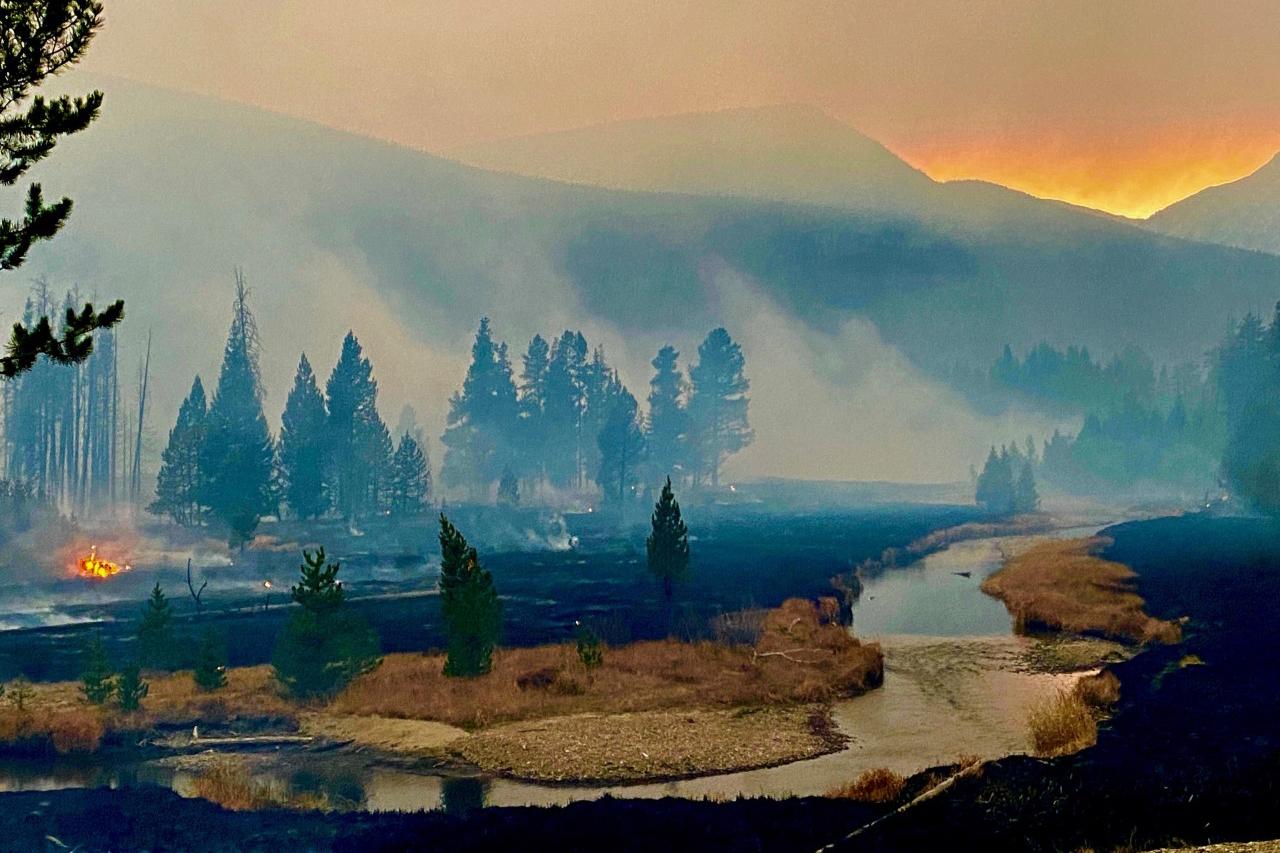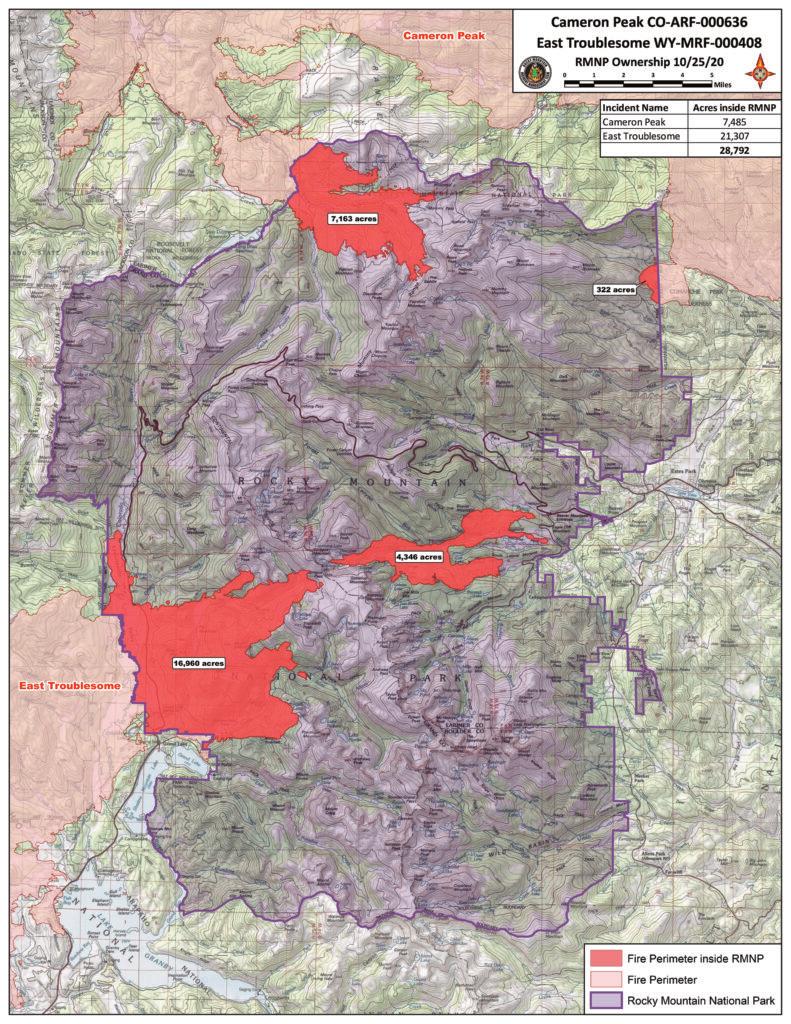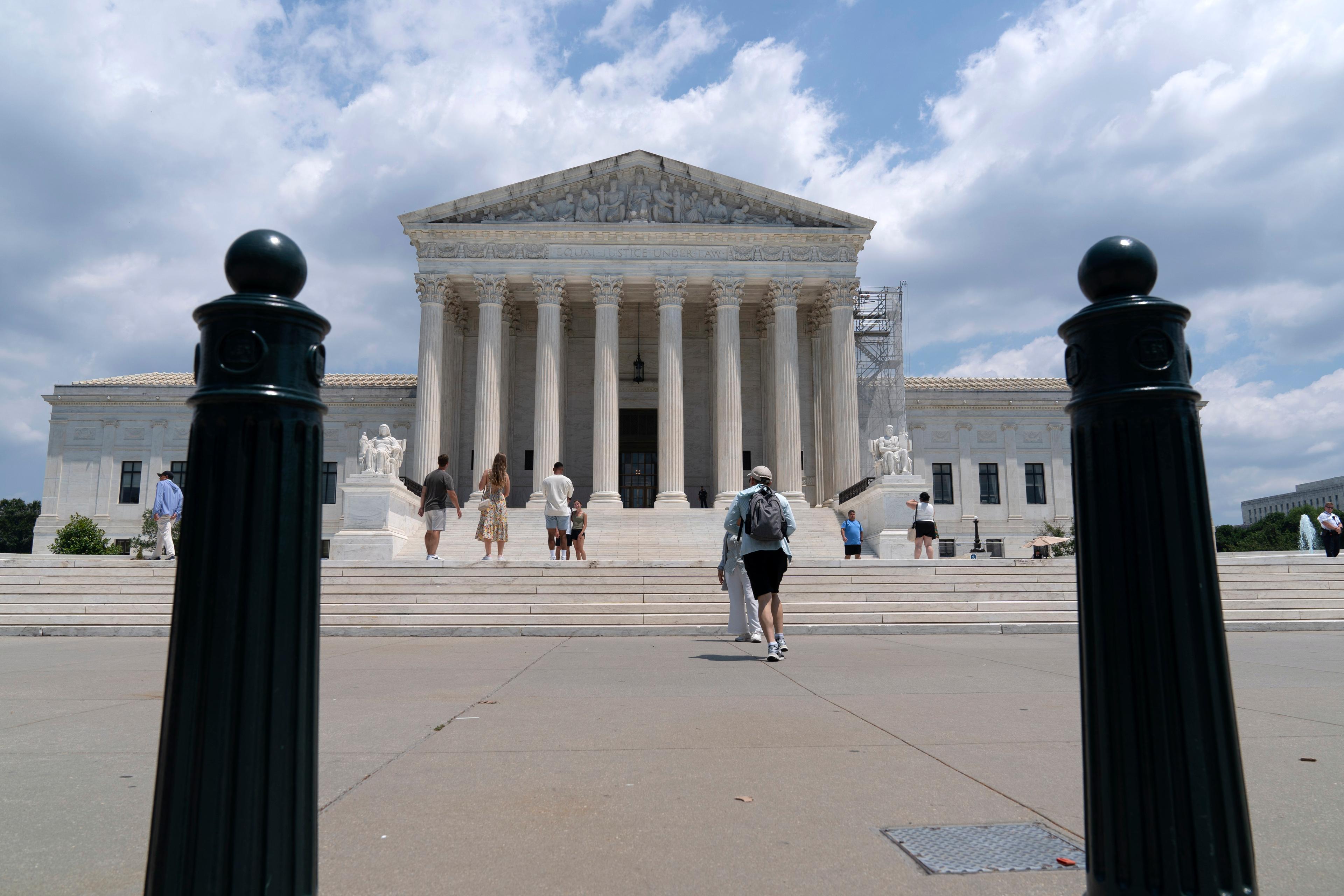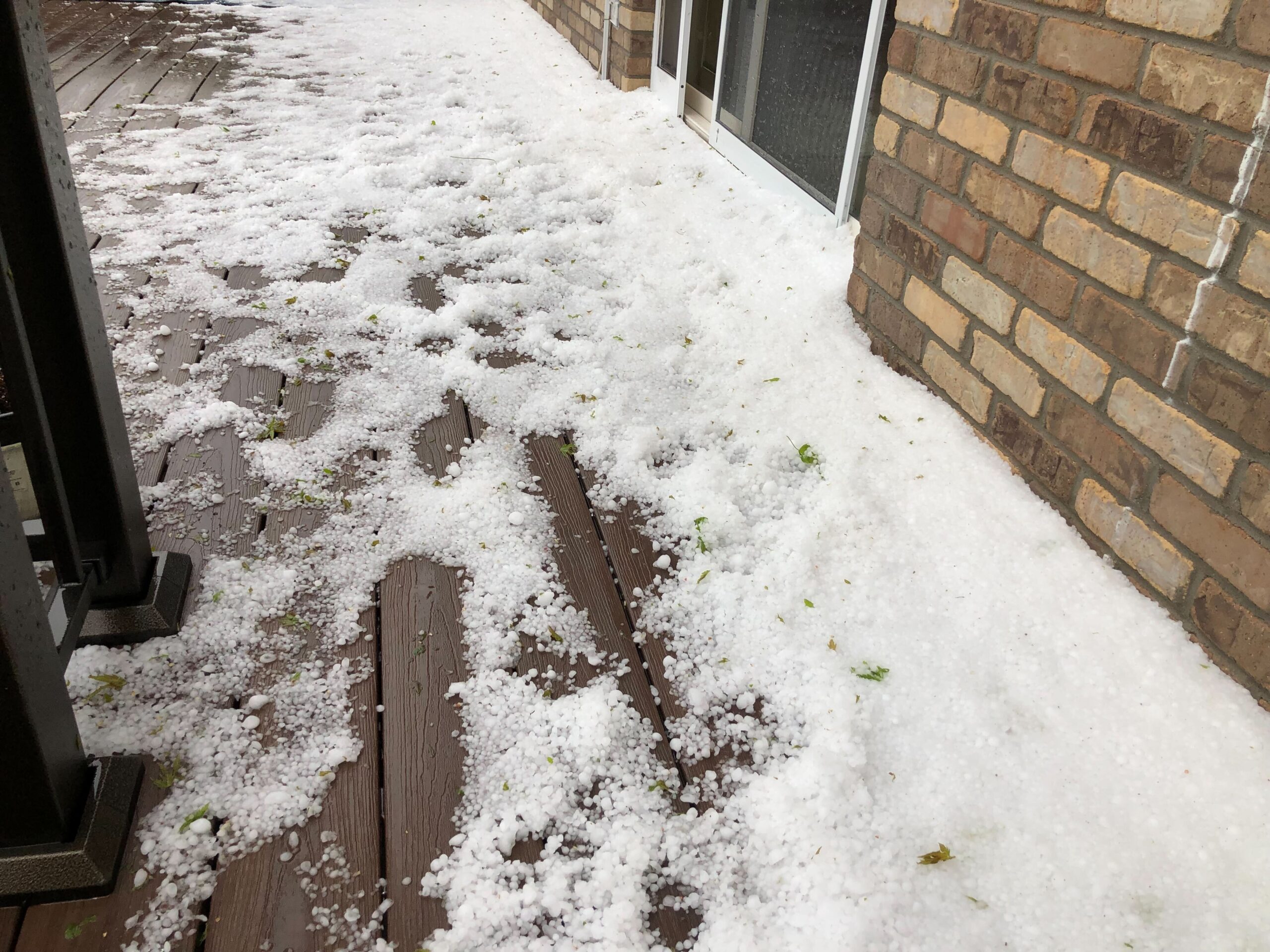
It’s been a rough year for Rocky Mountain National Park. It closed for several months in the lock-down days of the coronavirus pandemic, and now a record number of its acres has burned in the double threat of the Cameron Peak and the East Troublesome fires. And it’s again closed while the fires continue to burn.
The park shut down Oct. 22 after the East Troublesome fire made an unheard-of 18-mile, 120,000-acre run, burning into the west side of RMNP. And the next day, the wind pushed the embers across the Continental Divide. With the Cameron Peak fire already burning in the park’s borders, a total of nearly 29,000 acres of RMNP has been consumed amid the long and unusual fire season.
“It is extremely uncommon, since the park was created in 1915. So we have not had this level of fire activity in the park for 105 years,” said Kyle Patterson, the park’s public information officer.
“This year has been extreme, significant — all the words that we're hearing — unprecedented.”
RMNP has had more fires on its land in the last 10 years than in the previous 95, she said.
Patterson said the park might be able to open some areas soon, but the fire is still active and teams are still accessing damage — and that includes the loss of some structures from both fires. But it’s dangerous to get to some of the burn areas.
“Some of our issues with being able to assess structure damage on the west side in particular is that there's so many fallen trees on access roads and downed power lines and active fire,” Patterson said. “We are assessing structures on the east side too. And there are some places we might not know about for a while just because of safe access.”

Patterson said she hopes to release information about the total number of structures lost in the park early this week.
In an encouraging sign for the park and for crews fighting fires in northern Colorado, it was a quiet weekend in terms of fire activity. The region saw wind gusts of up to 50 mph, but Noel Livingston with the East Troublesome fire said it didn’t move the fire at all.
“It was a very good day on the fire again yesterday (Saturday). The most activity was melting snow and we were really happy to see mud — that moisture is moving down into the soil and down into the fuel. So that's a good thing.” Livingston said.
As of Sunday evening, the East Troublesome fire has burned 193,774 acres and is 37 percent contained. And the Cameron Peak fire has burned 208,663 acres and is 64 percent contained.
The snowstorm last week and the accompanying cold front proved to be extremely helpful in halting the fires’ growth.
“There's not even a word that you can say about how grateful and fortunate we are that those storms came in when they did,” Patterson said.
Parts of the Cameron Peak fire are still smoldering, but the quiet weekend and the more than 1,000 people working on the fire will beef up containment, said Andy Lyon, the public information officer with the incident team.
“So while we have these people, while we have good weather, while the fire — what's left of it — is showing itself, now is the time for us to get in there and do some of that work before winter,” Lyon said.
According to the Incident Information System, both the East Troublesome and the Cameron Peak fires are expected to be fully contained in early December.
Patterson said that’s when the next stage of work will begin at Rocky Mountain National Park — and despite the large swaths of charred and razed forest, not all the news will be bad.
“When these fires are completely suppressed, then you start assessing what kind of resource impacts. And in many ways there'll be positive resource impacts and there'll be future firebreaks,” she said.
She said it was difficult to take the long view when living through an historic fire season and seeing the damage to a state treasure like RMNP. But fires can be beneficial and are a natural part of a forest ecosystem.
“A lot of times things will restore and be better — but not in our lifetimes. So we won't necessarily reap that,” she said. “But we do want the public to understand that their beloved park is still here. And some areas may look a little different, but there's a lot of positives.”









